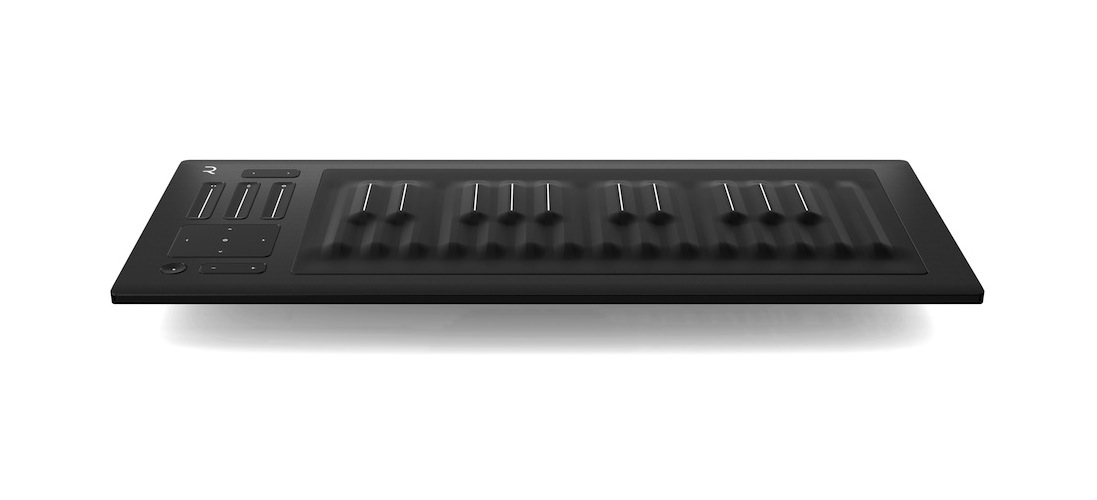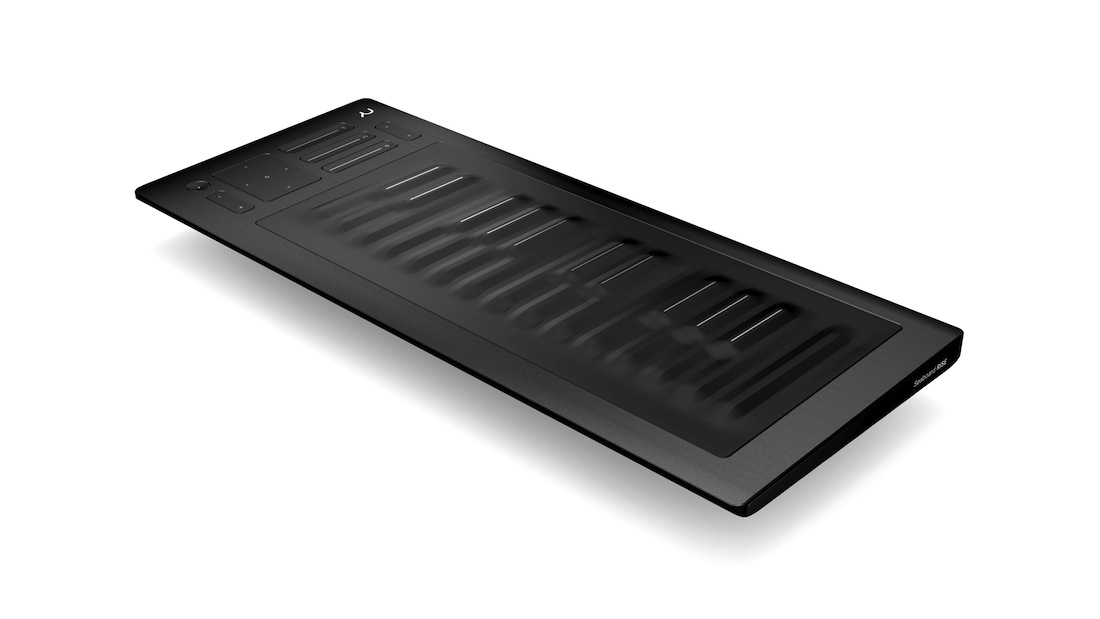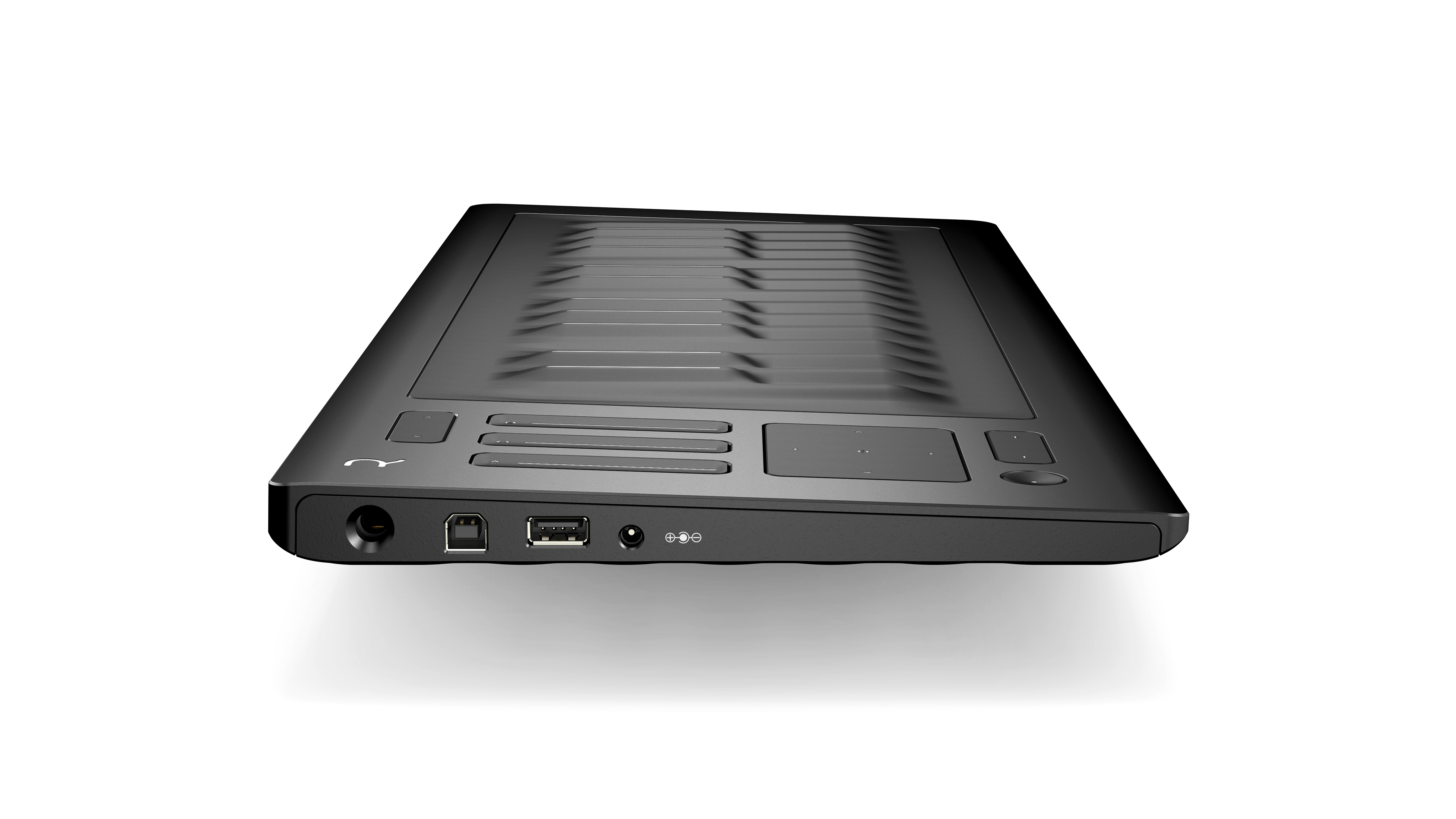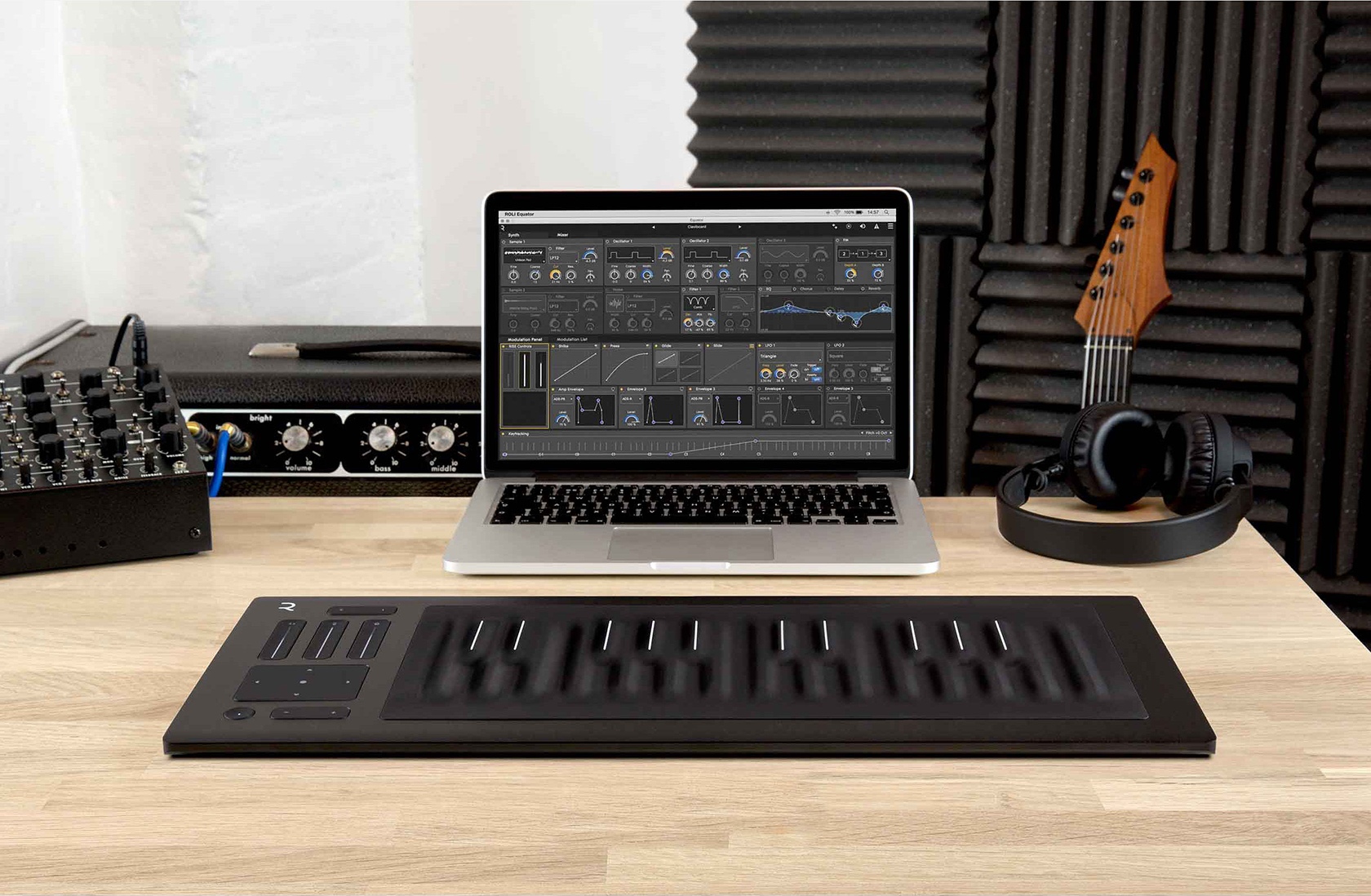Review: Roli Seaboard Rise
Roli unveils a more accessible version of its Seaboard Grand keyboard rethink.

At first glance, the Roli’s Seaboard Rise looks like rather standard fare: a 25-key MIDI controller with some extra controls on the left side. In actual fact, however, it’s more or less a complete rethink of the piano idiom, fusing elements of MIDI keyboards, touch devices, and the kinds of diverse physical responses that can come from acoustic instruments. Creator Roland Lamb’s company pioneered the concept with the 61-key $2,999 Seaboard Grand in 2013; now, the 25-key, $799 Seaboard Rise is an attempt to bring the technology to a wider audience, in a smaller, more accessible format. The result is exciting, fun to play, and extremely ripe for experimentation.
How It Looks
The Rise is a heavy black slab of beautiful industrial design, with thin white touch strips delineating its traditionally white-and-black keys from one another. To the left are a series of LED-backlight sliders, buttons, and an X-Y pad, and on the left side of the Rise are some ports: USB for connecting to your computer or mobile device, power (to charge the built-in battery, which lasts about 12 hours), and a foot-pedal input. The built-in battery and Bluetooth mean that the Rise can be used to perform wirelessly, with merely an iOS device and some headphones or speakers attached.


The keys and pads are incredibly soft and pliable, with a smooth, rubberized finish that beckon the sliding, bouncing, and squeezing of your fingers to produce sound (and are also bizarrely comforting to touch, sort of like a slick memory foam mattress for your fingers). In fact, calling them keys isn’t quite right: rather, the whole keyboard functions as a single pressure-sensitive interface (the creator refers to the keys as “keywaves”). You can play the Rise like a piano, but you can also bend the pitch of any individual note by rubbing the soft keys from side to side, or create glissando effects by sliding your fingers up and down the surface. Essentially, the Rise is an interface that allows users to play individual notes, but also explore the spaces between them.
How It Plays
Quite differently from a piano, for one. The Rise effectively combines the expressiveness and physicality of an acoustic instrument with the flexibility of a digital one. With the Rise you have far more degrees of input at your fingertips: Not only is there a consideration how hard you press the keys, but also how you let go, wiggle, and slide them. All of the discrete inputs make for effortless scales and vibrato, and this information is translated into subtle changes in response—the acoustic twang and slap of guitar strings, for instance, or the cutoff filter of a synthesizer. Roli’s approach represents a unique, new way of playing music, and there’s a great deal of depth and sophistication to it. One can imagine mastery of the instrument being a long, satisfying process.
The Rise’s bundled Equator software can run standalone or as a plug-in inside your DAW. A preset browser (with handy buttons on the controller to move forward and back) allow you to pop through vastly different sound sources easily, and there’s plenty here: three oscillators, a noise generator, and two sample modules that let you load in sound files its library, along with a host of multimode filters and effects (distortion, EQ, chorus, delay and reverb, to name a few). Your gestural commands can also be mapped as you see fit, with discrete readouts for strike, glide, slide, press and lift. It’s incredibly easy: Simply click on a gesture, and then push a parameter setting to configure an assignment and its functional range. You can map not only the gestural commands from the “keywaves”, but also assign the XY pad and the three configurable sliders. This is an incredibly deep, layered instrument that is in many ways more powerful than anything before it (or at least anything that’s available for less than many thousands of dollars).

The Bottom Line
The compact size and weight of Roli’s Seaboard Rise belie its sheer expressiveness as a creative tool. For sound designers and experimental music producers, it’s one of the most exciting releases in music tech in quite some time. While it won’t necessarily be immediately obvious how to best integrate the piece into your studio, the Rise welcomes new ways of thinking and playing, and feels very much like it will stand the test of time.
Pricing: MSRP: $799 Street: $799

